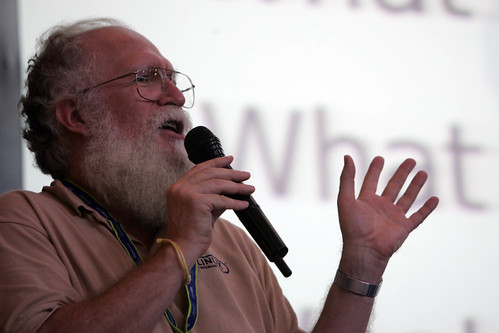Despite many articles talk about Open Source business models, and some papers describe also possible taxonomies of open source business models, none of them is analyzing in depth all components which describe the business logic of a specific firm.
FLOSSMETRICS has assessed a list of 120 companies – resulting in the biggest empirical analysis of the business models adopted by OS firms done so far – while QualiPSo has analyzed 7 firms’ case studies. None of them has focused yet its attention on how pieces of the business fit together, eventually describing the company’s strategy, or how a specific firm differentiates itself and deals with the competition, either proprietary or FLOSS.
 Not all lemons are created equal by Nan’s Pic’s
Not all lemons are created equal by Nan’s Pic’s
Adopting Alex Osterwalder’s definition of business model, I tried to process the information about the “Distributing copies of an OSS product for a fee” business model“, i.e. just selling free software copies, not bundling any services such as technical support, consulting, systems integration and so on.
The Value Proposition would be shrink-wrap open source products.
The Customer Segment would target business customers, likely SMEs and professionals, having low bandwidth (a missprint?) and poor knowledge of OS existence.
The Distribution Channel would definitely be a web site, too little margin for retail or worse to hire a sales team. In order to sell shrink-wrap OS products personalization it is a must, to exploit the long tail Community of Interest could play a great role.
Chesbrough and Rosenbloom suggest to consider “Position in value network” and “Competitive Strategy”, and as matter of fact the competitors are all forges and repositories, Linux Magazines and so on.
About the Competitive Strategy, Michael Porter identifies two types of advantages, the cost advantage and the differentiation advantage. Being difficult if not impossible to be cheaper than the competition, the only available option is serve customers’ idiosyncratic needs, I would say.
Once identified an appropriate Differentiation Strategy, big marketing investments are needed to reach customers who don’t know open source products. Consider that if the business would ever work, competitors could easily imitate you, without spending time and effort doing software selection.
At the end of the day, describing the business model and analyzing it helps to determine if it makes some sense, eventually ending to agree with Dana saying:
The attempts by some to shrink-wrap open source products and sell them at the cost of packaging have, on the whole, been failures.
Comparing business models could also be interesting. Reading “Do Some Business Models Perform better than Others? – A Study of the 1000 Largest US Firms†created a 16 different typologies of how firms differ in terms of two dimensions:
what a company does and how they make money from doing it.
It is worth to notice that some business models perform better than others, in particular selling the right to use assets is more profitable than selling ownership of assets.
I am looking forward to apply these considerations within the joint research I am conducting with the FLOSSMETRICS project, may be adding a dimension or two to the “main revenue generation” and “licensing model” already included in the actual taxonomy.
Technorati Tags: Open Source Strategies, business models, QualiPSo, FLOSSMETRICS
 Steve Raby
Steve Raby
 Michael Tiemann by
Michael Tiemann by  Jon Hall Maddog by
Jon Hall Maddog by 


 Sold! by
Sold! by
Reply